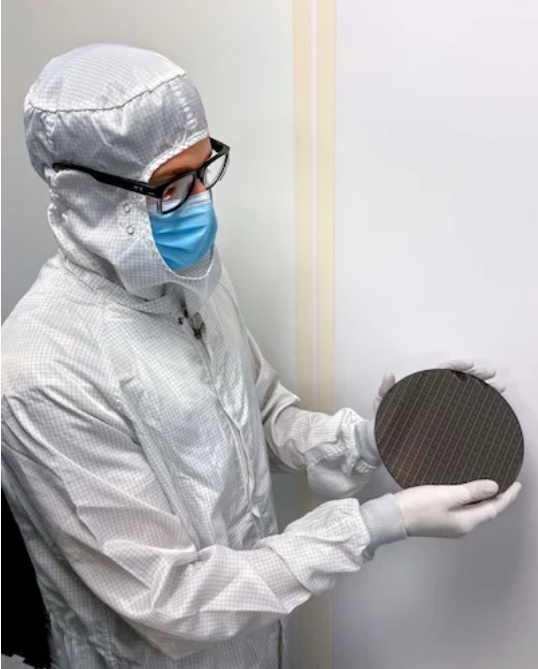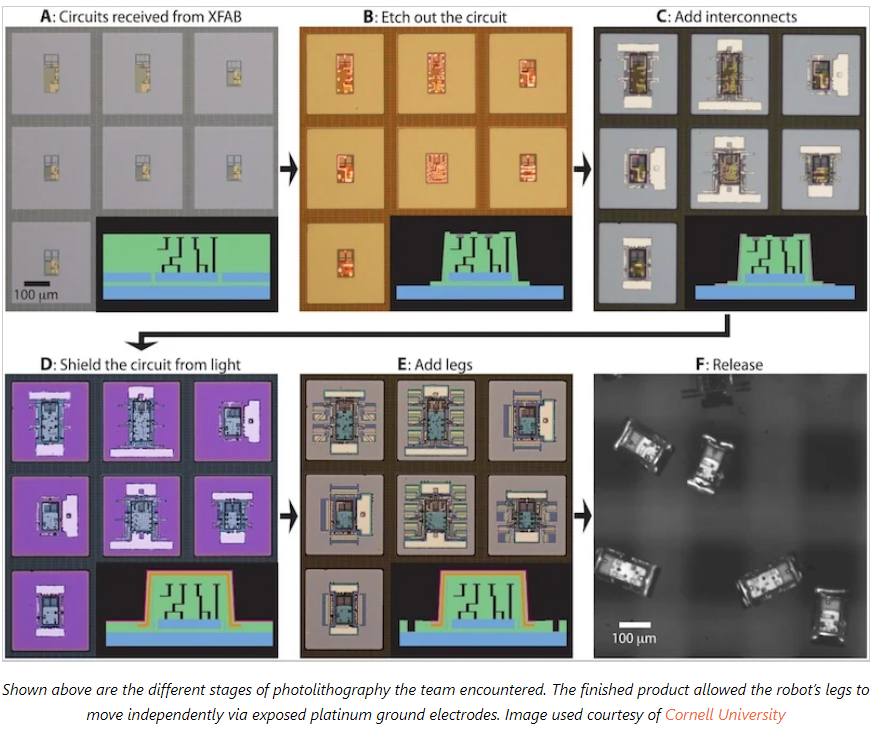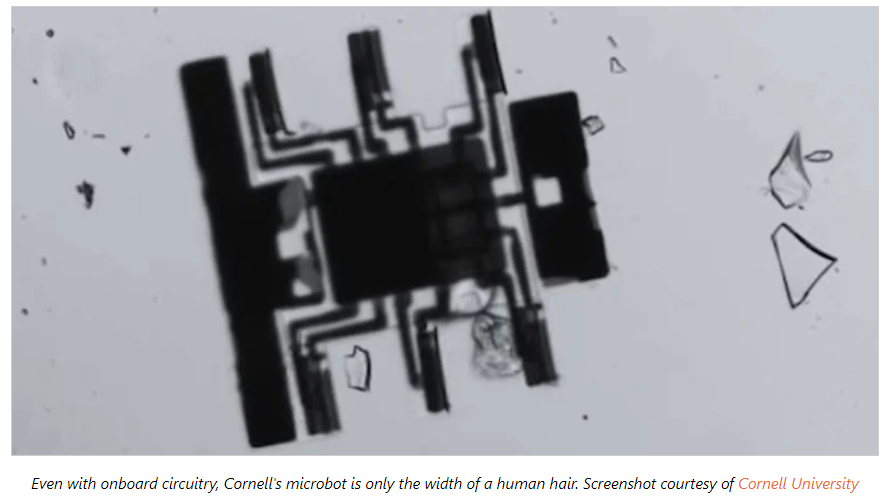 Click the blue text to follow us
Click the blue text to follow us
Recently, a group of researchers from Cornell University successfully installed a ‘brain’ on a solar-powered smart microbot.

These microbots range in size from 100 to 250 micrometers — almost the width of a human hair. Robots of this size are typically externally controlled, but the prototype from Cornell University includes an onboard circuit to control its movement.
Manufacturing Wireless Walking Robots
In recent years, researchers at Cornell University have developed microbots that can crawl, walk, swim, and bend their bodies. However, the movements of these microbots have been controlled by external wires or focused laser beams.
Professor Itai Cohen from Cornell’s College of Arts and Sciences gathered a team of researchers to find a way to enable microbots to move autonomously without external control. Previously, it was challenging to scale microbots to the micrometer level without wire bonds and multi-chip stacking. Typical CMOS circuits include wire bonds for different functions, which increase the size and weight of the IC, making it difficult to miniaturize; another major challenge is that an integrated fully functional robot must achieve heterogeneous integration of CMOS integrated circuits and micro-actuators.
The researchers at Cornell combined surface electrochemical actuators (SEAs) and silicon photovoltaics (PVs) to overcome these challenges. Once the CMOS circuit receives a voltage signal, oxygen molecules attach and expand to this layer, causing the actuators to bend the robot’s legs.
The ‘Brain’ of the Microbot and the Manufacturing Process
The researchers at Cornell University describe the ‘brain’ of the microbot as a simple CMOS clock circuit, which implements an array containing transistors, diodes, resistors, and capacitors. This integrated circuit generates a signal to control the robot’s gait. During testing, the microbot can move between 4 and 20 micrometers per second.

The final obstacle the research team overcame was the manufacturing process. This process required 13 layers of photolithography, 12 etching steps, and 11 depositions of 10 different materials. Utilizing the university’s Cornell NanoScale Science and Technology Facility (CNF), the researchers ultimately completed an 8-inch silicon wafer. With this wafer, the photovoltaic power supply and CMOS clock circuit of the microbot do not interfere with the movement of the robot’s legs.
Solar-Powered Microbots
The microbots have two pairs of photovoltaic-based power supplies, providing dedicated power for leg movement and the clock circuit. The CMOS clock circuit consists of a relaxation oscillator, serving as the clock output and frequency driver. The frequency driver is composed of a series of D flip-flops that convert pulses into a 50% duty cycle, allowing the robot to easily send signals through the output pins.

During testing, the researchers at Cornell University found that under continuous light intensities of 1 to 3 kilowatts per square meter, the speed of the microbot reached 12 μm/s. Although the researchers could increase the speed by raising the input frequency to 4Hz, the team kept the working frequency between 1 and 2Hz to ensure that the microbot would not slip on the surface.
Potential of Microbots in Cleaning, Monitoring, and Surgery
The researchers at Cornell University stated that these microbots could be used for environmental cleanup, medical substance monitoring, and microsurgery.
The researchers are working on integrating machine learning algorithms so that microbots can learn and adapt to their environment independently. The team hopes to expand the family of microbots in future research by implementing more complex tasks and AI-based algorithms.
Original link:
https://www.allaboutcircuits.com/news/researchers-put-electronic-brains-onboard-walking-microbots
|
High-End WeChat Group Introduction |
|
|
Startup Investment Group |
AI, IoT, chip founders, investors, analysts, brokers |
|
Flash Memory Group |
Covering over 5000 global Chinese flash memory and storage chip elites |
|
Cloud Computing Group |
Discussions on all-flash, software-defined storage (SDS), hyper-converged public and private clouds |
|
AI Chip Group |
Discussions on AI chips and heterogeneous computing with GPUs, FPGAs, and CPUs |
|
5G Group |
Discussions on IoT and 5G chips |
|
Third Generation Semiconductor Group |
Discussions on compound semiconductors such as GaN and SiC |
|
Storage Chip Group |
Discussions on various storage media and controllers such as DRAM, NAND, and 3D XPoint |
|
Automotive Electronics Group |
Discussions on MCUs, power supplies, sensors, and other automotive electronics |
|
Optoelectronic Devices Group |
Discussions on optoelectronic devices such as optical communication, lasers, ToF, AR, and VCSELs |
|
Channel Group |
Quotes, trends, channels, and supply chains for storage and chip products |

< Long press to recognize the QR code to add friends >
Join the above group chat
 Long press and follow
Long press and follow
Take you into the new era of information revolution of storage, intelligence, and interconnectivity

WeChat ID: SSDFans